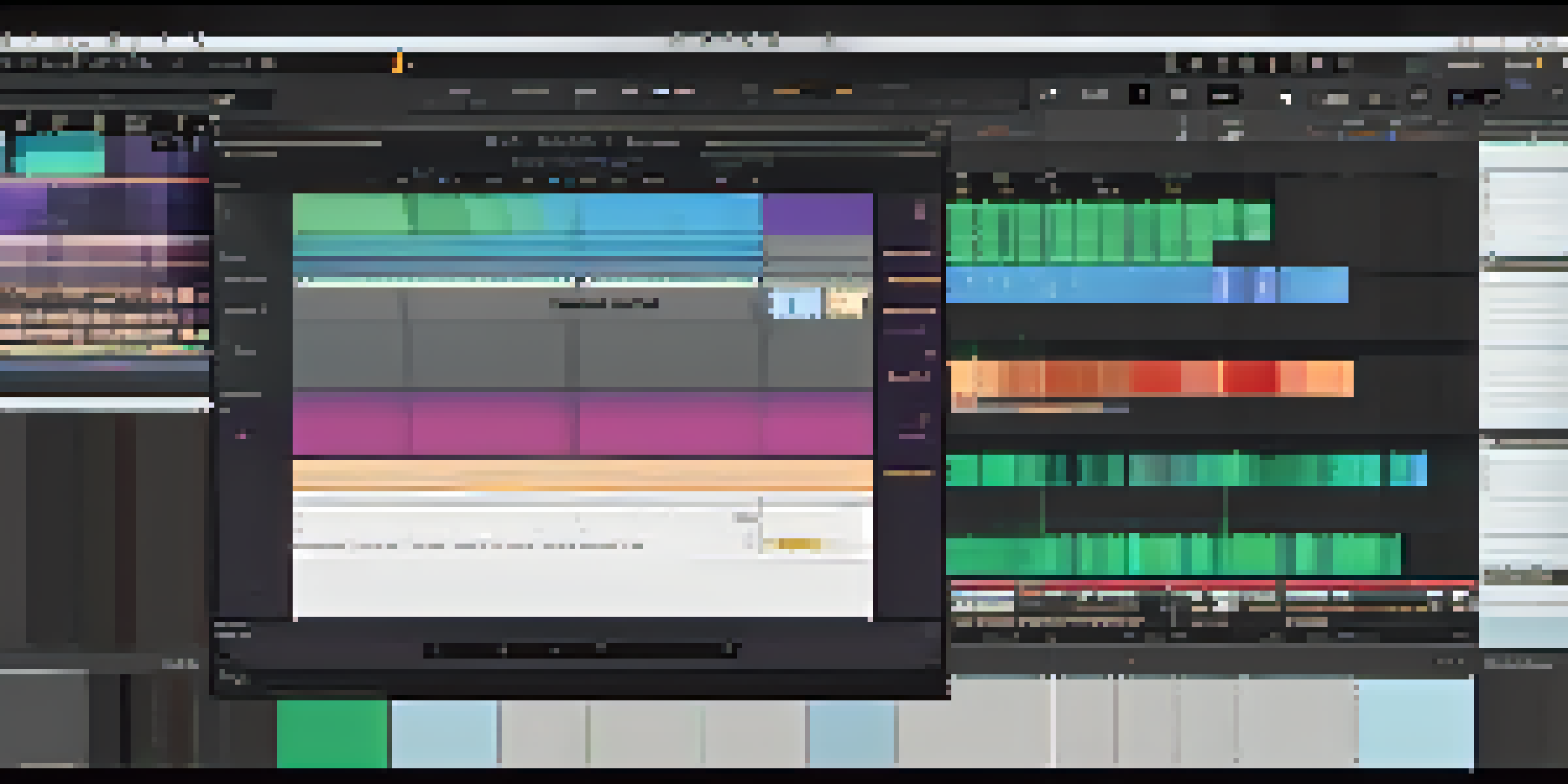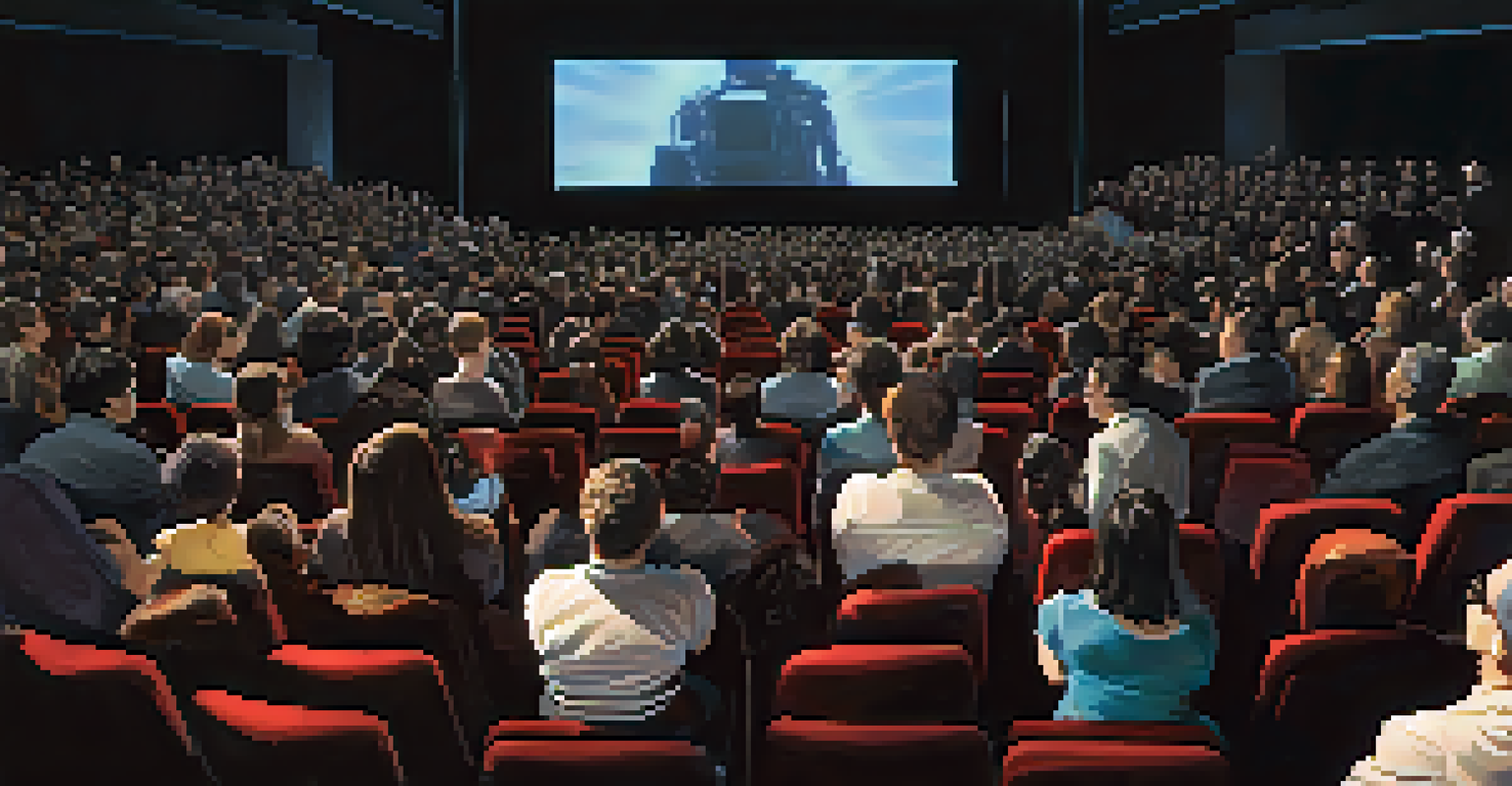The Effects of Test Screenings on Final Film Edits

Understanding Test Screenings and Their Purpose
Test screenings are previews of a film shown to select audiences before the final cut is released. These screenings are essential for gathering initial reactions and feedback, helping filmmakers understand how their movie resonates with viewers. They provide insights into what works and what doesn’t, allowing filmmakers to make informed decisions on edits.
The audience is the only critic whose opinion counts.
The primary goal of a test screening is to gauge audience engagement and emotional responses. Filmmakers closely observe audience reactions during pivotal moments, noting laughter, silence, or discomfort. This real-time feedback is invaluable, acting as a compass for the creative team as they navigate the editing process.
Ultimately, test screenings serve as a litmus test for a film's potential success in the market. By identifying strengths and weaknesses, filmmakers can refine their work to better connect with audiences, ensuring the final product is polished and impactful.
How Audience Feedback Shapes Film Edits
Audience feedback collected during test screenings can lead to significant changes in a film's pacing, length, and even plot points. For instance, if viewers express confusion about a character's motivation, filmmakers might choose to add scenes that clarify the storyline. This collaborative process helps create a more coherent and engaging film.

Moreover, emotional responses play a crucial role in shaping final edits. If audiences laugh at a particular joke but seem disengaged during emotional scenes, filmmakers might adjust the balance between humor and drama. This fine-tuning can enhance the overall viewing experience, making it more enjoyable for a wider audience.
Test Screenings Guide Film Edits
Test screenings provide valuable audience feedback that helps filmmakers refine their films for better engagement.
In some cases, test screenings can lead to drastic changes, such as reshooting scenes or altering endings based on viewer reactions. While these decisions can be tough, they often result in a film that better aligns with audience expectations and preferences.
The Role of Data in Final Film Edits
In today's digital age, data plays an increasingly important role in analyzing audience feedback during test screenings. Filmmakers can leverage metrics like viewer engagement scores and demographic insights to make data-driven decisions. This analytical approach helps identify trends and preferences that can inform final edits.
Creativity is allowing yourself to make mistakes. Art is knowing which ones to keep.
For instance, if a particular demographic expresses a strong preference for a specific genre or theme, filmmakers can tailor their edits to cater to those interests. By aligning the film with audience expectations based on data, filmmakers can enhance the likelihood of box office success.
However, relying solely on data can be a double-edged sword. Filmmakers must balance audience preferences with their creative vision, ensuring that the final product remains authentic and true to its original intent.
Balancing Creative Vision and Audience Expectations
One of the biggest challenges filmmakers face during the editing process is balancing their creative vision with audience expectations gathered from test screenings. While audience feedback is invaluable, filmmakers must also remain true to their artistic intentions. This delicate balance is crucial for a film's authenticity.
For example, a filmmaker may have a unique story arc in mind that contradicts popular expectations. While feedback might suggest a more conventional approach, sticking to the original vision could lead to a more impactful film in the long run. The key is to thoughtfully consider feedback without losing the essence of the story.
Balancing Vision with Feedback
Filmmakers must navigate the challenge of balancing their creative vision with audience expectations based on test screenings.
Ultimately, a successful film often emerges from this balance of creativity and audience insight. When filmmakers embrace feedback while staying true to their vision, they can create films that resonate deeply with viewers.
The Impact of Test Screenings on Genre-Specific Films
Different genres often respond uniquely to test screenings, as audience expectations vary widely. For instance, thrillers may rely heavily on pacing and suspense, while comedies focus on timing and humor. Understanding these nuances can help filmmakers tailor their edits accordingly.
In horror films, test screenings can reveal how effective scares are and whether the tension builds appropriately. If audiences are not reacting with the intended fright, filmmakers might need to adjust scenes or add jump scares to enhance the horror experience. This genre-specific feedback can be crucial for a film's overall success.
Similarly, in romantic comedies, the chemistry between characters is paramount. Test screenings can help identify whether audiences feel connected to the lead pair, guiding filmmakers to strengthen those relationships through edits. This genre-specific approach to feedback ensures that the film meets audience expectations.
Lessons Learned from Test Screenings
Many filmmakers have shared valuable lessons learned from test screenings that have shaped their approach to future projects. One key takeaway is the importance of being open to feedback, even when it challenges their creative instincts. Embracing constructive criticism can lead to unexpected improvements.
Another lesson is the need for flexibility in the editing process. Sometimes, what a filmmaker initially envisioned may not resonate with audiences, and being willing to pivot can lead to a more successful film. This adaptability is crucial in a constantly evolving industry.
Future of Test Screenings Evolving
Advancements in technology may transform test screenings, enhancing feedback collection while maintaining the importance of human insight.
Additionally, filmmakers often learn the significance of audience diversity in test screenings. Including a variety of viewers can ensure that feedback reflects a broad spectrum of perspectives, ultimately leading to a more universally appealing film.
The Future of Test Screenings in Filmmaking
As the film industry continues to evolve, so too will the methods of conducting test screenings. With advancements in technology, filmmakers may increasingly turn to virtual screenings and online platforms to gather feedback. This shift could broaden the audience pool and provide insights from diverse demographics.
Moreover, the integration of artificial intelligence and machine learning may revolutionize how feedback is analyzed. These tools can quickly identify patterns in viewer reactions, helping filmmakers make data-driven edits that resonate with audiences on a deeper level. The future of test screenings promises to be more efficient and insightful.

However, it's essential to remember that while technology can enhance the process, the human element remains vital. Filmmakers must continue to engage with audiences and value their feedback, ensuring that the art of storytelling remains at the forefront of filmmaking.